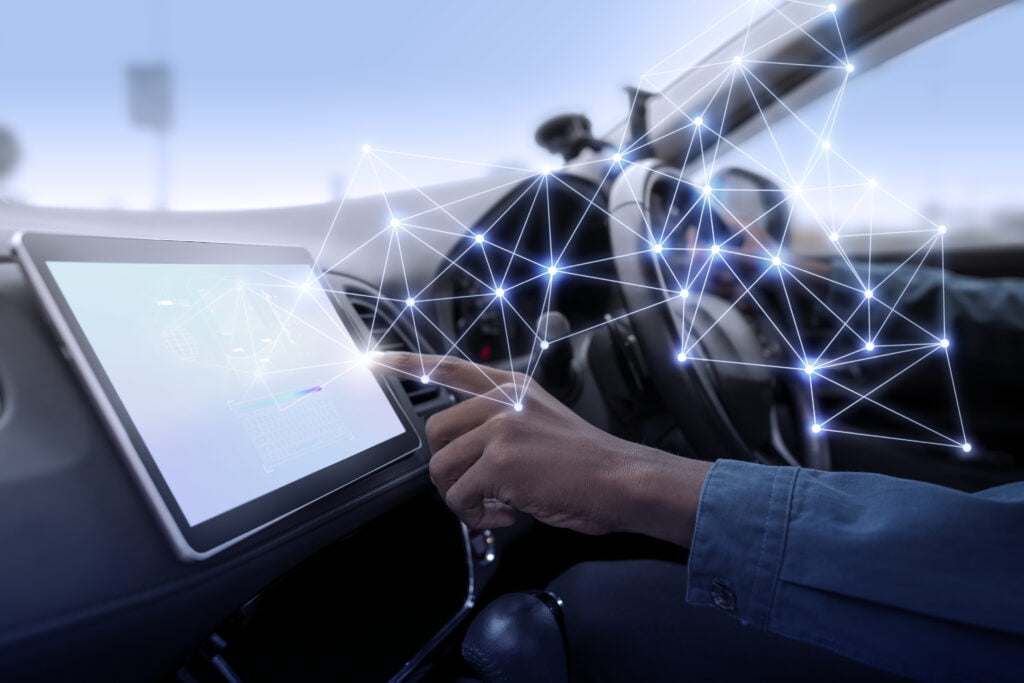ADAS, or advanced driver assistance systems, are essential to the advancement of autonomous driving. To improve vehicle safety, raise situational awareness, and enable automated decision-making, these systems rely on a sophisticated network of sensors, algorithms, and processors. The need for more potent and effective processing solutions is increasing along with the demand for autonomous driving.
Let’s talk about Field-Programmable Gate Arrays (FPGAs), a rapidly developing technology in the ADAS space. FPGAs are an excellent option for managing the computational demands of ADAS applications because they provide a special set of benefits above conventional processors. In this blog article, we’ll look at the growth of FPGAs in ADAS and how they’re changing how autonomous vehicles see the world and interact with it.
Understanding FPGAs
Let’s first examine what FPGAs are and how they work before exploring their applications in ADAS. Field-programmable gate arrays are integrated circuits that can be customized and flexible because they can be programmed and altered after manufacturing. FPGAs are highly adaptable to the changing needs of ADAS because they can be customized to specific tasks and algorithms, in contrast to application-specific integrated circuits (ASICs) or general-purpose CPUs.
An assortment of programmable logic blocks joined by programmable routing channels make up FPGAs. These logic blocks can be set up to carry out a number of tasks, including mathematical computations, memory storage, and input/output interfaces. FPGAs are ideally suited to the challenging computational demands of ADAS due to their programmability and parallel processing capabilities.
The need for FPGAs in ADAS
As ADAS evolves, the complexity of algorithms and processing requirements continues to increase. Traditional processors may struggle to keep up with the real-time processing demands of ADAS applications, particularly those involving sensor fusion, neural networks, and image processing.
FPGAs address this need for high-performance computing by offering several key advantages:
- Firstly, FPGAs excel at real-time processing. ADAS applications require immediate and accurate responses to changing road conditions, potential hazards, and object detection. FPGAs can handle massive amounts of data in parallel, enabling rapid decision-making and reducing latency.
- Secondly, FPGAs provide flexibility and adaptability. As ADAS algorithms and features evolve, FPGAs can be reprogrammed to accommodate new requirements without the need for hardware changes. This agility allows automotive manufacturers to stay ahead in a fast-paced and competitive market.
- Thirdly, FPGAs offer power efficiency. Autonomous vehicles need to balance computational power with energy consumption to optimize battery life and reduce heat dissipation. FPGAs are known for their energy efficiency, allowing high-performance computing while minimizing power consumption.
FPGA Applications in ADAS
FPGAs find extensive applications in various aspects of ADAS, revolutionizing the way autonomous vehicles perceive their surroundings and make decisions. Some notable applications include:
- Sensor fusion and data processing: FPGAs enable the integration and processing of data from multiple sensors, such as radar, lidar, and cameras. They facilitate the fusion of sensor data, filtering and pre-processing for noise reduction, and real-time object detection and tracking.
- Neural network acceleration: Neural networks are at the core of many ADAS algorithms, including object recognition, lane detection, and semantic segmentation. FPGAs can accelerate neural network computations, delivering high-performance inference and training capabilities.
- Image and video processing: FPGAs provide real-time image and video processing pipelines, enabling tasks such as image enhancement, pattern recognition, and feature extraction. These capabilities enhance the accuracy and reliability of ADAS functions like lane departure warnings and pedestrian detection.
- Sensor interfacing and communication: FPGAs serve as interfaces for various sensors used in ADAS, ensuring seamless communication and data exchange between the sensors and the processing units. They support high-speed communication protocols and interfaces, enabling efficient data transfer and synchronization for real-time decision-making algorithms
Challenges and considerations
While FPGAs offer significant advantages in ADAS, their adoption also comes with challenges and considerations that need to be addressed:
- Design complexity and development time: Designing and implementing FPGA-based solutions for ADAS can be complex and time-consuming. It requires expertise in both hardware and software design, as well as a deep understanding of ADAS algorithms and requirements.
- Programming and optimization challenges: Programming FPGAs requires specialized skills and tools, often using hardware description languages (HDL) like VHDL or Verilog. Optimizing the FPGA design for specific ADAS algorithms and performance targets can be a challenging task, requiring careful resource allocation and algorithm parallelization.
- Scalability and future-proofing: As ADAS technology evolves, scalability becomes crucial. FPGA designs need to be scalable to accommodate future enhancements and updates to ADAS algorithms and features. Additionally, ensuring compatibility with evolving automotive standards and interfaces is essential for long-term viability.
- Cost considerations for FPGA-based ADAS systems: While FPGAs offer numerous benefits, they can be more expensive compared to traditional processors. The cost of development, production, and integration of FPGA-based ADAS systems needs to be carefully evaluated to ensure a balance between performance, cost, and market competitiveness.
Conclusion
FPGAs are revolutionizing the ADAS landscape, providing the processing power, flexibility, and real-time capabilities necessary for autonomous driving. As ADAS algorithms become more sophisticated and demanding, FPGAs offer a compelling solution to address the computational challenges and enable reliable and safe autonomous vehicles.
With their ability to handle sensor fusion, accelerate neural networks, process images and videos in real-time, and facilitate sensor interfacing, FPGAs have emerged as a critical enabler for ADAS systems. Collaboration between FPGA manufacturers, automotive companies, and AI researchers will be vital in driving further advancements in ADAS technology and shaping the future of autonomous driving.
As we continue to witness the expansion of FPGAs in ADAS, we can anticipate exciting developments and innovations that will pave the way for safer, more efficient, and fully autonomous vehicles on our roads.












